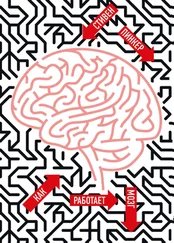Hummel, J. E., & Holyoak, K. J. 1997. Distributed representations of structure: A theory of analogical access and mapping. Psychological Review, 104, 427–466.
Hunt, M. 1999. The new know-nothings: The political foes of the scientific study of human nature. New Brunswick, N. J.: Transaction Publishers.
Hyman, S. E. 1999. Introduction to the complex genetics of mental disorders. Biological Psychiatry, 45, 518–521.
Jackendoff, R. 1990. Semantic structures. Cambridge, Mass.: MIT Press. Jackendoff, R. 1996. How language helps us think. Pragmatics and cognition, 4, 1–34.
Jackendoff, R. S. 1987. Consciousness and the computational mind. Cambridge, Mass.: MIT Press.
Jackson, D. J., & Huston, T. L. 1975. Physical attractiveness and assertiveness. Journal of Social Psychology, 96, 79–84.
Jaffe, S., & Hyde, J. S. 2000. Gender differences in moral orientation. Psychological Bulletin, 126, 703–726.
Jaggar, A. M. 1983. Feminist politics and human nature. Lanham, Md.: Rowman & Littlefield.
James, W. 1890/1950. The principles of psychology. New York: Dover.
Janda, L. H. 1998. Psychological testing: Theory and applications. Boston: Allyn & Bacon.
Jensen, A. 1969. How much can we boost IQ and scholastic achievement? Harvard Educational Review, 39, 1–123.
Jensen, A. 1971. A note on why genetic correlations are not squared. Psychological Bulletin, 75, 223–224.
Jensen, A. R. 1972. Genetics and education. New York: Harper and Row.
Jensen, A. R. 1982. The debunking of scientific fossils and straw persons: Review of The Mismeasure of Man. Contemporary Education Review, 1, 121–135.
Jensen, A. R. 1998. The g factor: The science of mental ability. Westport, Conn.: Praeger.
Jespersen, O. 1938/1982. Growth and structure of the English language. Chicago: University of Chicago Press.
Johnson, G. R., Ratwik, S. H., & Sawyer, T. J. 1987. The evocative significance of kin terms in patriotic speech. In V. Reynolds, V. Falger, & I. Vine (Eds.), The sociobiology of ethnocentrism (pp. 157–174). London: Croon Helm.
Jones, O. 2000. Reconsidering rape. National Law Journal, A21.
Jones, O. 2001. Time-shifted rationality and the Law of Law's Leverage: Behavioral economics meets behavioral biology. Northwestern University Law Review, 95.
Jones, O. D. 1997. Evolutionary analysis in law: An introduction and application to child abuse. North Carolina Law Review, 75, 1117–1242.
Jones, O. D. 1999. Sex, culture, and the biology of rape: Toward explanation and prevention. California Law Review, 87, 827–942.
Junger, S. 1997. The perfect storm: A true story of men against the sea. New York: Norton.
Jussim, L. J., & Eccles, J. 1995. Are teacher expectations biased by students' gender, social class, or ethnicity? In Y.-T. Lee, L. J. Jussim, & C. R. McCauley (Eds.), Stereotype accuracy: Toward appreciating group differences. Washington, DC: American Psychological Association.
Jussim, L. J., McCauley, C. R., & Lee, Y.-T. 1995. Why study stereotype accuracy and inaccuracy? In Y.-T. Lee, L. J. Jussim, & C. R. McCauley (Eds.), Stereotype accuracy: toward appreciating group differences. Washington, DC: American Psychological Association.
Kaas, J. H. 2000. The reorganization of sensory and motor maps after injury in adult mammals. In M. S. Gazzaniga (Ed.), The new cognitive neurosciences. Cambridge, Mass.: MIT Press.
Kahneman, D., & Tversky, A. 1982. On the study of statistical intuitions. Cognition, 11, 123–141.
Kahneman, D., & Tversky, A. 1984. Choices, values, and frames. American Psychologist, 39, 341–350.
Kamin, L. 1974. The science and politics of IQ. Mahwah, N. J.: Erlbaum.
Kaminer, W. 1990. A fearful freedom: Women's flight from equality. Reading, Mass.: Addison-Wesley.
Kandel, E. R., Schwartz, J. H., & Jessell, T. M. 2000. Principles of neural science 4th ed. New York: McGraw-Hill.
Kane, R. 1998. The significance of free will. New York: Oxford University Press. Kanwisher, N., & Moscovitch, M. 2000. The cognitive neuroscience of face processing: An introduction. Cognitive Neuropsychology, 17, 1–13.
Kaplan, H., Hill, K., & Hurtado, A. M. 1990. Risk, foraging, and food sharing among the Ache. In E. Cashdan (Ed.), Risk and uncertainty in tribal and peasant economies. Boulder, Colo.: Westview Press.
Kaplan, J. 1973. Criminal justice: Introductory cases and materials. Mineola, N. Y.: The Foundation Press.
Kaplan, S. 1992. Environmental preference in a knowledge-seeking, knowledge- using organism. In J. H. Barkow, L. Cosmides, & J. Tooby (Eds.), The adapted mind: Evolutionary psychology and the generation of culture. New York: Oxford University Press.
Karmiloff-Smith, A. 1992. Beyond modularity: a developmental perspective on cognitive science. Cambridge, Mass.: MIT Press.
Karmiloff-Smith, A., Klima, E. S., Bellugi, U., Grant, J., & Baron-Cohen, S. 1995. Is there a social module? Language, face processing, and Theory of Mind in individuals with Williams syndrome. Journal of Cognitive Neuroscience, 7, 196–208.
Katz, L. C., & Crowley, J. C. 2002. Development of cortical circuits: Lessons from ocular dominance columns. Nature Neuroscience Reviews.
Katz, L. C., & Shatz, C. J. 1996. Synaptic activity and the construction of cortical circuits. Science, 274, 1133–1137.
Katz, L. C., Weliky, M., & Crowley, J. C. 2000. Activity and the development of the visual cortex: New perspectives. In M. S. Gazzaniga (Ed.), The new cognitive neurosciences. Cambridge, Mass.: MIT Press.
Keegan, J. 1976. The face of battle. New York: Penguin.
Keeley, L. H. 1996. War before civilization: The myth of the peaceful savage. New York: Oxford University Press.
Keil, F. C. 1989. Concepts, kinds, and cognitive development. Cambridge, Mass.: MIT Press.
Keil, F. C. 1995. The growth of causal understandings of natural kinds. In D. Sperber, D. Premack, & A. J. Premack (Eds.), Causal cognition. New York: Oxford University Press.
Kelling, G. L., & Sousa, W. H. 2001. Do police matter? An analysis of the impact of New York City's police reforms (Civic Report 22). New York: Manhattan Institute for Policy Research.
Kelman, H. 1958. Compliance, identification, and internalization: Three processes of attitude change. Journal of Conflict Resolution, 2, 51–60.
Kennedy, J. 1993. Drawings in the blind. New Haven: Yale University Press. Kennedy, R. 1997. Race, crime, and the law. New York: Vintage.
Kenrick, D., Groth, G., Trost, M., & Sadalla, E. 1993. Integrating evolutionary and social exchange perspectives on relationships: Effects of gender, self-appraisal, and involvement level on mate selection criteria. Journal of Personality and Social Psychology, 64, 951–969.
Kenrick, D., & Sheets, V. 1994. Homicide fantasies. Ethology and Sociobiology, 14, 231–246.
Kevles, D. J. 1985. In the name of eugenics: Genetics and the uses of human heredity. Cambridge, Mass.: Harvard University Press.
Keyser, S. J. 2000. Meter and poetry. In R. A. Wilson & F. C. Keil (Eds.), The MIT Encyclopedia of the Cognitive Sciences. Cambridge, Mass.: MIT Press.
Keyser, S. J., & Halle, M. 1998. On meter in general and on Robert Frost's loose iambics in particular. In E. Iwamoto (Ed.), Festschrift for Professor K. Inoue. Tokyo: Kanda University of International Studies.
Kimura, D. 1999. Sex and cognition. Cambridge, Mass.: MIT Press.
Kingdon, J. 1993. Self-made man: Human evolution from Eden to extinction? New York: Wiley.
Kirwin, B. R. 1997. The mad, the bad, and the innocent: The criminal mind on trial. Boston: Little, Brown.
Kitcher, P. 1982. Abusing science: The case against creationism. Cambridge, Mass.: MIT Press.
Klaw, S. 1993. Without sin: The life and death of the Oneida community. New York: Penguin.
Klein, R. G. 1989. The human career: Human biological and cultural origins. Chicago: University of Chicago Press.
Читать дальше
Конец ознакомительного отрывка
Купить книгу











